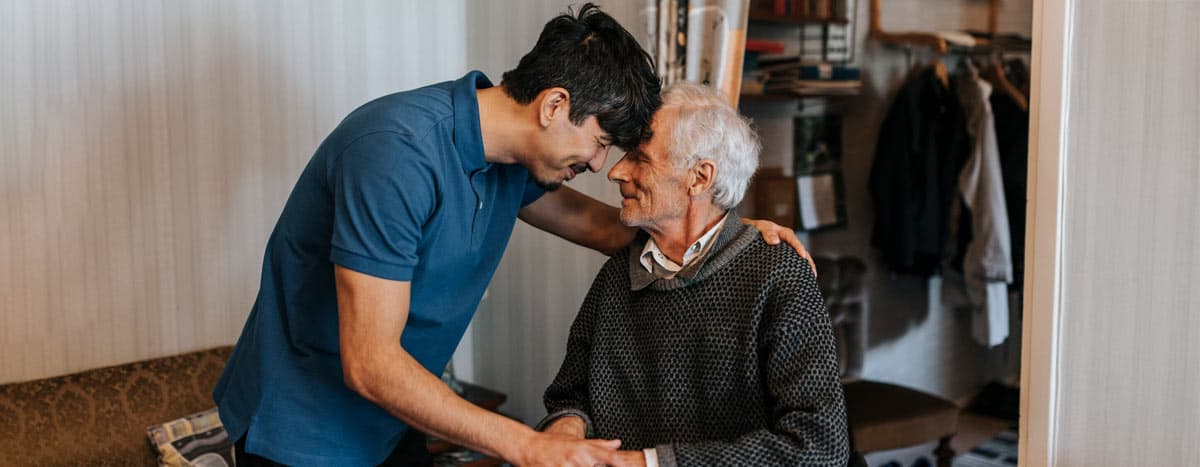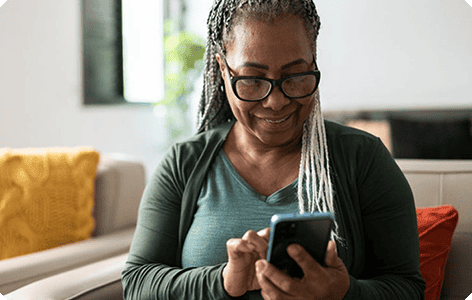This article is part of a year-long, 25th anniversary series that explores where insight communities have been, where they are today, and the market and customer trends that are shaping where C Space is taking insight communities next.

Chances are, someone you know is a caregiver. Maybe that someone is you. As of 2024, a nationally representative poll from the University of Michigan Institute for Social Research estimated that more than one in four people 50 or older help take care of at least one family member or friend who has a health problem or disability. The rise in the aging population, increases in mental health concerns, people living longer with chronic diseases, a shortage of healthcare staff and facilities, and the high cost of professional care have all contributed to the growth of unpaid caregiving.
And caregivers are finally starting to get the attention they are due. Many states are exploring ways to offset the financial costs of caring for a family member, with several states having implemented caregiver tax credits or other reimbursement programs. At the federal level, the Supporting Older Americans Act of 2020 (OAA), effective March 2020, authorized OAA appropriations through fiscal year 2024. This included a provision to provide states with assistance to promote and implement the use of caregiver assessments and tie them back to referrals and caregiver support plans. On the corporate side, pharmaceutical companies, in particular, are ramping up attention to and support of caregivers who are critical players in ensuring patients are able to benefit from their medicines, treatment plans, and resources. Companies such as BMS, Merck, Otsuka, and Pfizer are engaging with caregivers via tools as diverse as training programs, screening tools, links to assistance programs, support resources, and even documentaries highlighting caregivers’ work and the need for more support.
With the acknowledgment of caregivers as an indispensable member of the care team, often as the key decision-maker and critical link between the patients who need medications and the physicians who are prescribing them, how can pharma companies work to support them in ways that are authentic and impactful?
At C Space, our experience with several different types of caregivers has taught us that there are three key steps to creating meaningful support:
1. Build true understanding of caregivers’ needs and real-life experiences
Caregiving is an incredibly difficult, complex, and selfless act. It comes with a myriad of challenges for the caregivers, many of whom have significant demands on their time and energy in addition to their caregiving tasks. Caregivers may hold full-time jobs on top of caregiving or caregiving may take them out of the workforce altogether. The children of Baby Boomers, who often had their own children later in life, can find themselves juggling caring for young children and aging parents at the same time. The definition of caregiving can be expansive, requiring caregivers to become quick experts on their loved one’s disease, build new skills advocating for their loved ones, and negotiate complex financial and health system dynamics. Not to mention the emotional burden of potentially watching a loved one suffer or decline, especially where there is no promise of recovery.
This demanding, highly emotional situation and prioritization of a loved one over themselves often in turn leads caregivers to become patients as well. It is estimated that half of caregivers have major depression, a rate twice as high as in the general population. One study estimated that a caregiver’s mortality risk was 63% higher than their non-caregiving peers.
And while caregivers may experience many shared challenges, each caregiver’s experience is also incredibly nuanced and personal. Providing meaningful support for caregivers means understanding their needs, which comes from a profound appreciation of their realities and struggles. Caregivers crave support, a sense of community that they’re not in this alone and helpful resources for the tough times and conversations with their loved ones and healthcare professionals.
Bringing real caregivers’ individual stories to life through deep exploration into and prioritization of their needs and pain points is the first step to creating consequential support. Building insight communities of caregivers rallied around this purpose is one extremely effective way to understand and highlight these specific needs and pain points.
2. Build solutions with caregivers as an integral part of the process
Once we have a deep understanding of and insight into caregiver realities, the process of developing support solutions and resources to address true needs begins. Developing products centered around needs starts with translating pain points and desires into core features of the solution, which is best done hand-in-hand with the caregivers who are ultimately going to use them.
Staying connected with caregivers throughout the development process from the inception/exploration stages for idea generation to feedback on concepts and potential features, all the way through to evaluation and testing of solutions is key. Involving caregivers throughout de-risks the process and ensures time saved by focusing on what will be most valuable to the caregivers from the beginning. It assists in tailoring the solution to caregivers in a way that meets them where they are — in their caregiving journey but also, more literally, during the caregiving activities of their day-to-day.
3. Maintain relevant solutions that deliver value for caregivers by leveraging ongoing feedback
Change is the only constant! Once solutions are developed, it’s important to maintain a feedback loop and continue to iterate with target caregivers who are representative of a solution’s needs. This ensures features remain relevant and useful. It’s important to plan for the long term as technologies change, therapeutic areas evolve, and patients and caregivers continue along their journeys. Where a caregiver is in their caregiver journey can play a large role in what resources will be most helpful to them at a given time, and being ready to adapt with them as their child gets older, their parent requires more assistance, or their circumstances around caregiving change, for example, is important. Being prepared to evolve with caregivers’ needs as a true partner means staying in touch with them, maintaining a human connection, and always keeping them at the center of the solution.
What immediate actions can pharma companies take to support caregivers?
With the growing importance of the caregiver in the patient journey and dynamics of the caregiver within the patient-healthcare professional relationship, providing support that is authentic and impactful is more critical than ever. Gaining a sense of how to best meet caregivers where they are today when developing caregiver and patient-centric solutions can help pharma companies solve for and with them. And remember, this is not a one-and-done solution. Help ensure value and impact for caregivers in their day-to-day by maintaining an always-on approach to caregiver solutions.
Ready to get started? C Space’s insight community approach helps pharma companies identify changing caregiver needs and develop the solutions that offer meaningful support today and tomorrow. Learn more in our guide linked below, Customer Inside: Building the Next Generation of Insight Communities.






